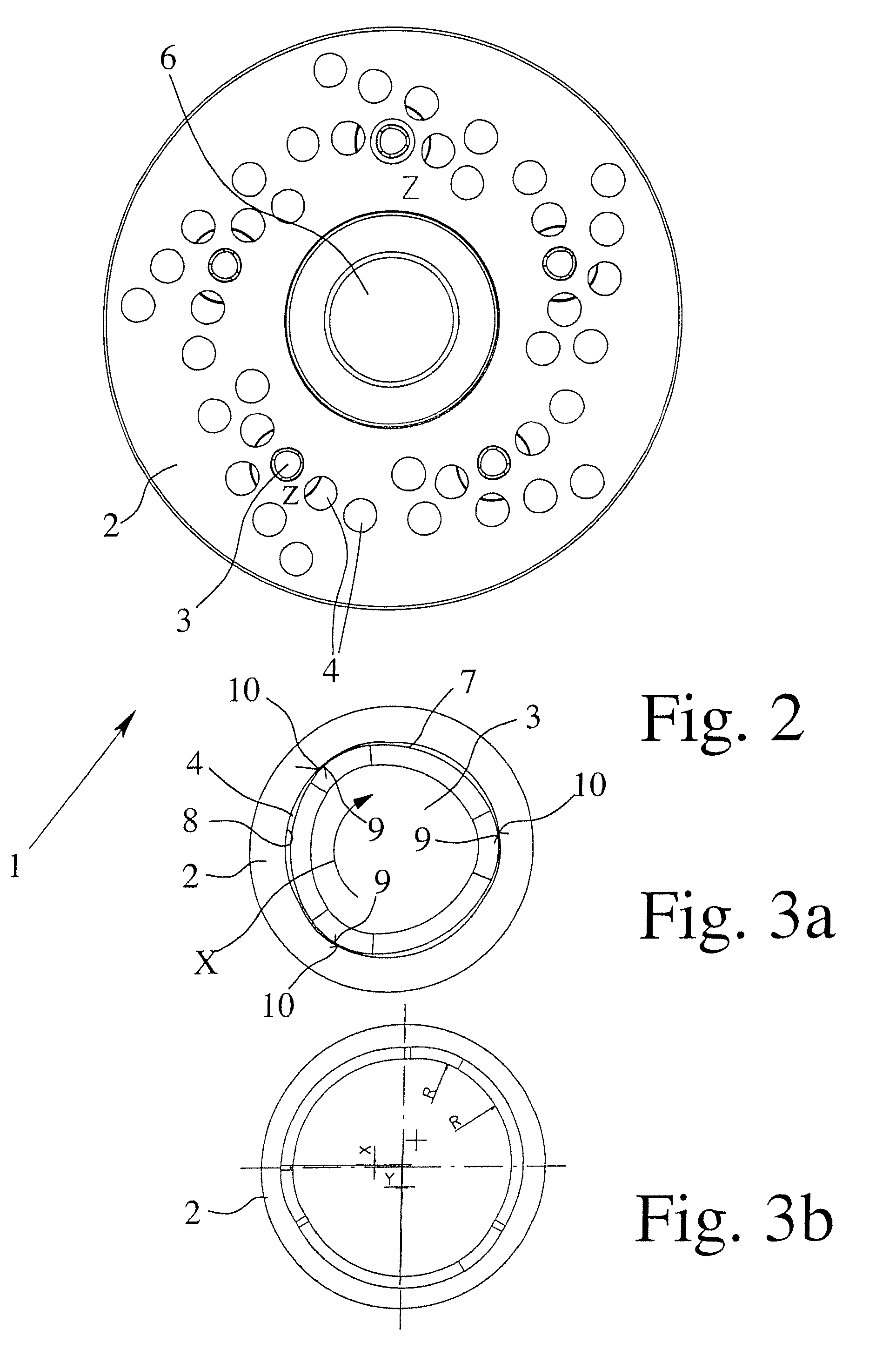Clamping device
a technology of a clamping device and a clamping bore, which is applied in the direction of tyre repairing, tyre parts, structural/machine measurement, etc., can solve the problems of increasing the effort needed to pull the bolt out of the centering bore, requiring a corresponding amount of effort, and unable to achieve the effect of high component strength
- Summary
- Abstract
- Description
- Claims
- Application Information
AI Technical Summary
Benefits of technology
Problems solved by technology
Method used
Image
Examples
Embodiment Construction
[0033]FIG. 1 illustrates a clamping device 1 for clamping a vehicle wheel (not illustrated) onto a shaft of a wheel balancing machine, said clamping device having a clamping flange 2 and a plurality of centering bolts 3. The clamping flange 2 has a plurality of recesses 4 for receiving the centering bolts 3, a centering bolt 3 being releasably insertable by means of an insertion region 5 into a recess 4. The centering bolts 3 are fixed releasably into a group of recesses 4 corresponding to the arrangement of holes in the rim of the vehicle wheel to be clamped. The vehicle wheel is centered radially during the wheel balancing operation by means of the centering bolts 3 which engage in the centering or fastening holes of the rim of the vehicle wheel. The clamping flange 2 has a central aperture 6 which makes it possible to push said clamping flange onto the shaft of the wheel balancing machine.
[0034]FIG. 2 illustrates a view from below of the clamping device 1 illustrated in FIG. 1, t...
PUM
 Login to View More
Login to View More Abstract
Description
Claims
Application Information
 Login to View More
Login to View More - R&D
- Intellectual Property
- Life Sciences
- Materials
- Tech Scout
- Unparalleled Data Quality
- Higher Quality Content
- 60% Fewer Hallucinations
Browse by: Latest US Patents, China's latest patents, Technical Efficacy Thesaurus, Application Domain, Technology Topic, Popular Technical Reports.
© 2025 PatSnap. All rights reserved.Legal|Privacy policy|Modern Slavery Act Transparency Statement|Sitemap|About US| Contact US: help@patsnap.com



